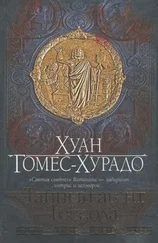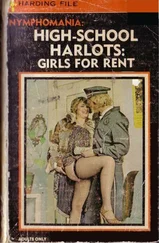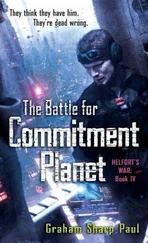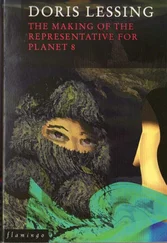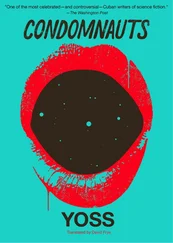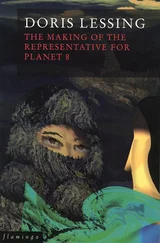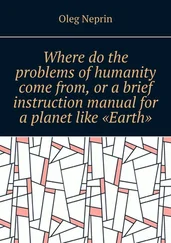New York. That’s where we would stay…
There was still much more…
Ettu talked about the bold human feat of conquering height and volume, overcoming the resistance of form, using only inadequate primitive materials. But he passed by the ultramodern living edifices of grodo architecture, not built but grown, without a glance. He disdained the perfect glass-steel and synplast angles of astroports in favor of the musty glory of medieval European castles. For him, human architecture had had its childhood, youth, mature adulthood… and its senile decay was the obscene and perfunctory perfection that had been brought to Earth by all the races of the galaxy.
In museums, he looked at paintings and sculptures, and sometimes even talked to them, with the sort of affection and familiarity you see between old friends. The Chinese bronzes, the delicate Japanese calligrams, the erotic reliefs of the Hindu temple at Konark, the Greek Orthodox icons and the unique brilliance of Flemish primitives—for him, it was all a cause of wonder. The unbridled colors in paintings by the blacks of Africa and America, the abstractions of European modernism… he preferred it all to the cold geometry of the Cetians’ networks of lights, the Centaurians’ fractal kaleidoscopes, the living surfaces of grodo bioarchitecture. The beauty of imperfection, of life, was what human pictorial art was all about for him.
I’ve lost many of his words, but some of them remain etched in my memory, like drops of water that splash from the stream and sprinkle the rock and so remain for a while. Insufficient in themselves, isolated, but giving an idea of the torrent.
I listened shyly, amazed that an all-powerful xenoid would pay so much attention to our dead and obsolete art. I didn’t understand his obsession with unearthing our past glories. It made no sense in him, one of the masters of the present and future. His rapture over colors was stupid, since as everybody knew, his species could only see shades of gray, not the miracle of colors.
I understood a little better when I met some other Colossaurs, beasts concerned only with force and power, for whom art was a waste of time and a stupid weakness.
Then I began to comprehend Ettu.
His tragedy was to have been born in the wrong star system, under the wrong sun, in the wrong time.
Not long ago, much later, I read about a king, Ludwig of Bavaria, and I realized that one of the descriptions applied to him would have fit Ettu perfectly: mad for beauty.
He was a stranger among his own kind, a freak, a leper, a pariah. And the arts of the rest of the galaxy were too elevated, abstract, and perfect for his crude yet refined and terribly heightened sensitivities. The history of human art was exactly what he would have wanted his own history to be. Elemental, imperfect, sometimes naïve, feeling and stumbling its way to what others already knew from the start. But vital, never giving up…
And of course, there was his human friend, the mysterious Moy…
In Barrio 13, nobody asks questions about anybody’s past. I didn’t either, but curiosity demanded that I learn more, and I simply listened more closely.
Sometimes he talked to Moy as if he were there. At first it terrified me—a crazy Colossaur isn’t exactly the safest person in the universe to be around. But later, picking up bits here and bits there, putting together this monologue and that, the puzzle began to take shape, and I calmed down.
Moy had been a human artist, he was dead, and Ettu knew it perfectly well. He had been Moy’s agent, the one who made him famous. He was also, after a fashion, his friend. No matter where they went, they were each as lonely as a drop of water in the desert… They ended up getting intimate. Logical, right?
That would have been enough for me, once. In Barrio 13, a girl learns that when you dig until you get to the bottom of anything, you’ll find sex… and that’s it. It can be dangerous to your sanity to wonder what lies beyond. It’s almost always something slobbery, gross, malignant, yet pathetic. Like a wad of phlegm that comes to life and tries to speak.
All the same, I felt I knew enough about Ettu for nothing to gross me out. I kept listening between the lines.
That’s how I found out it was Moy who named him Ettubrute, early in their relationship. Later, what started off as a caustic joke must have turned into a kind of affectionate nickname.
In any case, it was clear that their relationship was never obvious or easy. They pretended at mutual hatred, but they needed one another. Moy was always complaining that his agent exploited him, but he never questioned any of his numbers. Ettu pretended to put up with the human only because of the money he made from him, but it was his vitality and his very presence that gave him the strength to bear his fate as a hopeless creampuff from a race, a world, and an ethic of brutal titans like Colossa.
I never found out what kind of art Moy made. I suppose he was a painter or an architect, given Ettu’s tastes. Colossaurs may have very keen ears, but they have no sense of rhythm or melody, so they lack even the most basic skills needed for producing or appreciating music. And among humans, the olfactory arts were never our forte.
Moy, the painter or architect, did something with his body, something impressive, savagely beautiful and risky. Something that wore him out so much that he almost died every day, or something like that. Ettu admired his talent and his complete devotion. And his bravery. But he was always ready to protect him from anything—especially from himself. Moy became addicted to telecrack, and Ettu got him over his dependence.
I guess neither of them really realized how much they needed each other… until it was too late.
But I only discovered the why and the how of that “too late” afterward. At the end.
When we’d been all over Earth, when Ettu seemed to realize that a thousand lives wouldn’t be enough for him to see the whole history of human art, only then did we settle in New York. The house he rented on Staten Island was remote, huge, and safe, and I immediately christened it the Castle. And he devoted himself to artists.
It seemed logical to me. After the dead art of past eras, the living creators.
Logical. I couldn’t imagine how terribly logical it was.
We started frequenting exhibits and performances by the most famous artists of the moment. Well, not exactly the most famous. The most famous ones who still lived on Earth.
I learned the meaning of the word “patron” when I saw him in action. Though he was a very odd patron.
He gave his credits away lavishly, without drawing up contracts, without committing himself to support anyone’s career. But they were just small contributions—“to relieve the artist’s situation,” as he put it himself while smiling his toothy grin.
I couldn’t see the sense in what he was doing. Was he planning to devote himself seriously to the art business? The big xenoid dealers had cornered the market on exports from Earth, as everyone knew. Ettu could buy all the art produced on the planet; if he didn’t get the okay from the galactic sharks in the field, no collector would buy any of it from him.
And if he was really aiming to help human artists, why toss around these relatively insignificant amounts, which might relieve their lives for a month or two but not longer? Why not pick three or four truly talented artists and give them some real support?
Not long ago I saw the fishers in the Bay of Fundy. Before spreading their nets, they dumped the guts and scraps from their previous catch into the water. This clever operation, which attracted all the fish eager to devour the blood and entrails of their unfortunate peers, is called “baiting.”
Читать дальше

